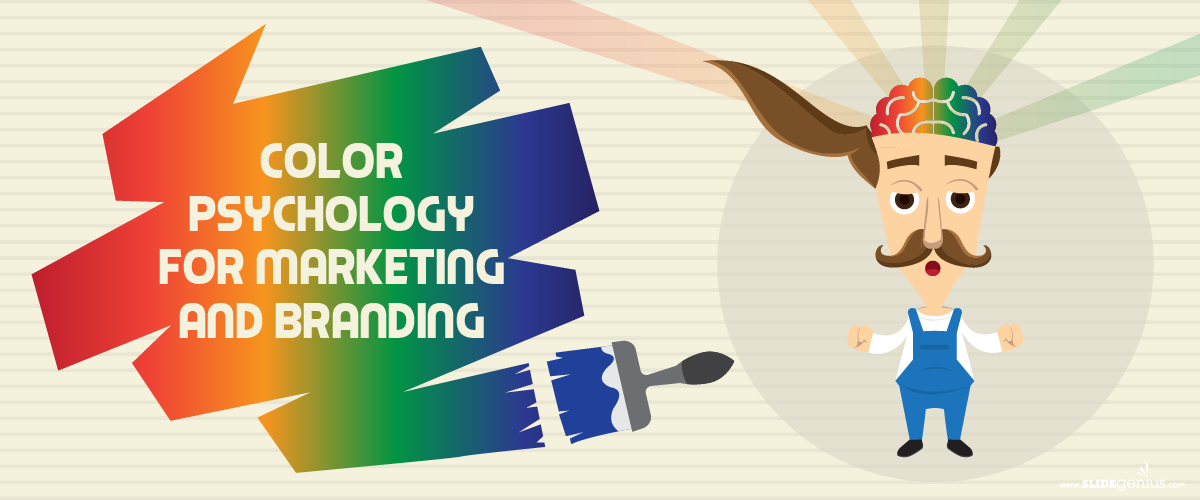The psychology of color is a complex topic that deserves more attention than it gets. Contrary to popular opinion, it’s more than a superficial element that can be taken at face value. The truth is that color has many nuances based on factors like individual experiences, cultural differences, personal tastes, background and upbringing, and other contexts. Therefore, to expect color psychology to be universal is to be oblivious to its multifaceted nature.
Enid Verity, the author of Color Observed, said it best: “Color is a mysterious, eluding definition. It is a subjective experience, a cerebral sensation depending on three related and essential factors: light, an object, and an observer.” And in case that isn’t enough to convince you of the subjective nature of color and the psychology behind it, Manlio Brusatin in his book, A History of Colors, claimed, “The field of colors is a territory with ragged borders located somewhere between the sciences and the arts, between physics and psychology, a land whose configuration constitutes a border between these two diverse cultures.”
The Common Misconception About Color Psychology
You can’t study the psychology of color without conceding to the reality that everything about it is a mere generalization. There are no facts set in stone or truths that apply to all. By accepting the ambiguity of this field, you’ll be able to move on and learn plenty about color symbolism and how it affects the human psyche. Aside from this, you’ll also be better poised to take in both the positive and the negative connotations that comes with it. As such, you’ll have a more insightful look into the role that colors play in the way you respond to the world around you. Below are some examples of how colors can take on different meanings depending on the context:
White
In Western cultures, white is typically used for bridal and baptismal dresses because it is believed to represent purity and innocence. In Oriental and African cultures, however, it is often associated with death. It can even take on an entirely different meaning when taken in the context of Chinese theater: dread and intimidation.
Black
In most cultures today, black stands for death, evil, and negativity. But would you believe that in ancient Egypt, the color originally meant life, fertility, and growth? This is all thanks to the color’s resemblance to the Nile Delta soil.
Blue
This is possibly the most ubiquitous of all colors. Its interpretation can range from sadness and melancholy (e.g. the idiom, feeling blue) to authority and security (e.g. the way it’s used by trusted brands like IBM, Visa, and Intel.)
Yellow
Researchers consider yellow as the most ambiguous color because it has certain qualities that are stark in their differences. On the one hand, it’s generally recognized as the symbol for happiness and enlightenment. On the other, it can represent deceit, cowardice, and betrayal as a symbolism of Judas Escariot’s betrayal to Jesus Christ in Christian beliefs. In Germany, yellow was also associated with envy and jealousy.
Red
This is possibly the most consistent of all colors in terms of symbolism. In ancient Rome and Greece, for example, red was associated with war. In America today, it symbolizes love and power. Perhaps the visual strength of this color is what associated it with passion of any kind.
Green
There are generally three associations made with the color green: youth, nature, and financial prosperity. Depending on the context, green can take any of these three interpretations. In some cases, it can also be used to refer to jealousy, the “green-eyed monster.”
Purple
It’s common for people to associate purple with royalty and elegance. In the United States, it’s also recognized as a symbol of bravery (i.e. the Purple Heart, the oldest military award given to U.S. military members). However, in Brazil and Thailand, it depicts mourning and despondence.=
Orange
In Western culture, orange is suggestive of warmth and autumn. In Colombia, it represents fertility and sexuality. While in some Eastern cultures, we see it as a representation of love, happiness, and humility—that’s why Buddhist monks use it for their robes.
Recommended: Designing to Be Different
The Role of Color Psychology in Branding
Now you know the ambiguous nature of color. But don’t be disheartened—this doesn’t mean you’ll never understand color psychology and apply it to your business. Wherever you are on the map, colors communicate certain messages and stir up emotions. Yes, interpretations may vary from one person to another, but that’s already out of your hands. You can’t do anything about that unless you build your own brand in such a way that it creates a whole new definition for a certain color.
The key to the effective use of color psychology in branding is to not think of how customers will react to the color of your choice. Instead, think of the message you want to impart, and then work from there. The following are the three main roles of color in branding:
1. Color as the Primary Basis for Snap Judgments
A study called Impact of Color on Marketing found that “about 62 to 90 percent of the assessment [of people or products] is based on colors alone.” This undoubtedly shines a new light on the relationship of color and branding. The same study claimed that “prudent use of colors can contribute not only to differentiating products from competitors but also influencing moods and feelings—positively or negatively—and therefore, to attitude towards certain products.”
In another study from the Rochester Institute of Technology, it was found that “85% of the reasons people may buy something are based on the use of color application.” It’s not an overstatement to say that once a person walks towards an item whose color s/he likes, s/he has already gone through more than half of the decision process.
2. Color as a Major Player in Developing Brand Personalities
Did you know that color can affect the way potential customers perceive a brand? There’s a lot of thought that goes into choosing a brand color. Big names in the retail and commercial fields don’t go around picking colors at random when launching a new product line. They put a lot of time and hard work to find out which shade, hue, or tint best embodies their brand personality. And note this: they don’t overthink and worry about people’s interpretation. Instead, they use their brand identity as the starting point for choosing a color that reflects the personality they want to be known for. Remember, color stereotypes change overtime. What’s important is to choose a color that feels right for your brand.
3. Color as a Primary Contributor to Brand Recognition
Imagine a green Facebook logo, a black Google banner, and a red Starbucks siren—they just don’t make sense, do they? Why is this? You’re used to associating a certain color to a certain brand because, well, that’s just how it’s supposed to be. You are conditioned to draw an instant connection between two things that have always been associated with each other. That’s just how the brain works—and brands have successfully capitalized on this.
With the retail market becoming more saturated every year, it’s imperative for brands to create an identity that resonates with their target audience. Brand recognition is not a choice; it’s a must. And one of the ways you can achieve it is by leveraging color psychology.
Color psychology is not a new thing in marketing. People have been using it for a long time now. If you still haven’t subscribed to this phenomenon, now is the time. With the right use of color in branding, you will surely be able to take your business to a higher level.
Resources:
Ciotti, Gregory. “The Psychology of Color in Marketing and Branding.” HelpScout. May 17, 2016. www.helpscout.net/blog/psychology-of-color
Goguen, Kate. “The Influence of Color on Purchasing Decisions Related to Product Design.” Scholar Works. n.d. scholarworks.rit.edu/cgi/viewcontent.cgi?article=7108&context=theses
Maglaty, Jeanne. “When Did Girls Start Wearing Pink?” Smithsonian Magazine. April 7, 2011. www.smithsonianmag.com/arts-culture/when-did-girls-start-wearing-pink-1370097
Postolache, Andra. “Color Psychology in Identity and Branding.” Designmodo. June 26, 2012. designmodo.com/color-psychology
“Impact of Color on Marketing.” Emerald Insight. n.d. www.emeraldinsight.com/doi/abs/10.1108/00251740610673332
“The Colors of Anger, Envy, Fear, and Jealousy.” Sage Journals. n.d. journals.sagepub.com/doi/abs/10.1177/0022022197282002
“The Psychology of Colors in Marketing and Branding.” Color Psychology. April 28, 2017. www.colorpsychology.org/color-psychology-marketing
Related Posts
Rick Enrico is the CEO and Founder of SlideGenius, Inc., a global presentation design agency. He regularly publishes expert presentation tips on the SlideGenius blog. He currently oversees an experienced team of designers, software developers, and marketing professionals that specialize in creating custom corporate presentations and cloud publishing applications. Connect with him on LinkedIn and Twitter.










